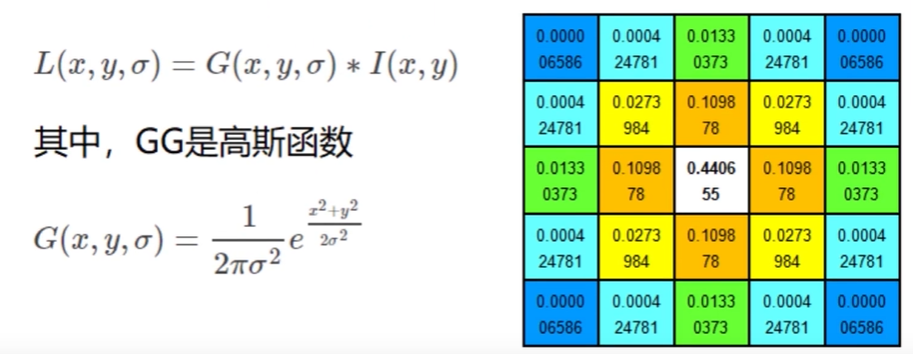PyCharm env选择 Python3.6, opencv-python 3.4.1.15
template

credit_card

utils.py
import cv2 def sort_contours(cnts, method="left-to-right"): reverse = False i = 0 if method == "right-to-left" or method == "bottom-to-top": reverse = True if method == "top-to-bottom" or method == "bottom-to-top": i = 1 boundingBoxes = [cv2.boundingRect(c) for c in cnts] # 用一个最小的矩形,把找到的形状包起来x,y,h,w (cnts, boundingBoxes) = zip(*sorted(zip(cnts, boundingBoxes), key=lambda b: b[1][i], reverse=reverse)) return cnts, boundingBoxes def resize(image, width): (h, w) = image.shape[:2] ratio = width / float(w) height = int(h * ratio) resize_img = cv2.resize(image, (width, height)) return resize_imgocr_bank_card.py
from imutils import contours import numpy as np import cv2 import utils # 信用卡类型 BANK_CARD_TYPE = { "3": "American Express", "4": "Visa", "5": "MasterCard", "6": "Discover Card" } def cv_show(name, img): cv2.imshow(name, img) cv2.waitKey(0) cv2.destroyAllWindows() # 读取模板 template = cv2.imread("images/ocr_template.png") # cv_show("template", template) ref = cv2.cvtColor(template, cv2.COLOR_BGR2GRAY) # cv_show("template_gray", ref) ref = cv2.threshold(ref, 10, 255, cv2.THRESH_BINARY_INV)[1] # cv_show("binary", ref) # 计算轮廓 # 参数:二值图,轮廓,要保留的部分 ref_, refCnts, hierarchy = cv2.findContours(ref.copy(), cv2.RETR_EXTERNAL, cv2.CHAIN_APPROX_SIMPLE) cv2.drawContours(template, refCnts, -1, (0, 0, 255), 3) # cv_show("template", template) print(np.array(refCnts).shape) refCnts = utils.sort_contours(refCnts, method="left-to-right")[0] digits = {} for (i, c) in enumerate(refCnts): # 计算外接矩形并进行resize (x, y, w, h) = cv2.boundingRect(c) roi = ref[y:y + h, x:x + w] roi = cv2.resize(roi, (57, 88)) digits[i] = roi # 初始化卷积核 rectKernel = cv2.getStructuringElement(cv2.MORPH_RECT, (9, 3)) sqKernel = cv2.getStructuringElement(cv2.MORPH_RECT, (5, 5)) # 读取输入图像,预处理 image = cv2.imread("images/credit_card_01.png") # cv_show("image", image) image = utils.resize(image, width=300) gray = cv2.cvtColor(image, cv2.COLOR_BGR2GRAY) # cv_show("gray", gray) # 礼帽操作,突出更明亮的区域 tophat = cv2.morphologyEx(gray, cv2.MORPH_TOPHAT, rectKernel) # cv_show("tophat", tophat) gradX = cv2.Sobel(tophat, ddepth=cv2.CV_32F, dx=1, dy=0, ksize=-1) gradX = np.absolute(gradX) (minVal, maxVal) = (np.min(gradX), np.max(gradX)) gradX = (255 * ((gradX - minVal) / (maxVal - minVal))) gradX = gradX.astype('uint8') print(np.array(gradX).shape) # cv_show("gradX", gradX) # 通过闭运算(先膨胀,再腐蚀),将数字连在一起 gradX = cv2.morphologyEx(gradX, cv2.MORPH_CLOSE, rectKernel) # cv_show("gradX", gradX) # 通过OpenCV THRESH_OTSU 自动寻找合适的阈值 thresh = cv2.threshold(gradX, 0, 255, cv2.THRESH_BINARY | cv2.THRESH_OTSU)[1] # 再次执行闭运算 thresh = cv2.morphologyEx(thresh, cv2.MORPH_CLOSE, sqKernel) # cv_show("thresh", thresh) # 计算轮廓 thresh_, threshCnts, hierarchy = cv2.findContours(thresh.copy(), cv2.RETR_EXTERNAL, cv2.CHAIN_APPROX_SIMPLE) cnts = threshCnts cur_img = image.copy() cv2.drawContours(cur_img, cnts, -1, (0, 0, 255), 3) # cv_show("cur_img", cur_img) locs = [] for (i, c) in enumerate(cnts): # 计算轮廓 (x, y, w, h) = cv2.boundingRect(c) ar = w / float(h) # 选择合适的区域,这里以四个数字为一组为例 if ar > 2.5 and ar < 4.0: if (w > 40 and w < 55) and (h > 10 and h < 20): locs.append((x, y, w, h)) # 将符合的轮廓从左至右排序 locs = sorted(locs, key=lambda x: x[0]) output = [] for (i, (gX, gY, gW, gH)) in enumerate(locs): groupOutput = [] # 根据坐标提取每一个组(提取时范围稍微往外移) group = gray[gY - 5:gY + gH + 5, gX - 5:gX + gW + 5] # cv_show("group", group) group = cv2.threshold(group, 0, 255, cv2.THRESH_BINARY | cv2.THRESH_OTSU)[1] # cv_show("group", group) # 计算每一组的轮廓 group_, digitsCnts, hierarchy = cv2.findContours(group.copy(), cv2.RETR_EXTERNAL, cv2.CHAIN_APPROX_SIMPLE) digitsCnts = contours.sort_contours(digitsCnts, method="left-to-right")[0] # 计算每一组中的每一个数值 for c in digitsCnts: # 当前数值的轮廓并进行resize (x, y, w, h) = cv2.boundingRect(c) roi = group[y:y + h, x:x + w] roi = cv2.resize(roi, (57, 88)) # cv_show("roi", roi) # 计算匹配度(得分) scores = [] for (digit, digitROI) in digits.items(): result = cv2.matchTemplate(roi, digitROI, cv2.TM_CCOEFF) (_, score, _, _) = cv2.minMaxLoc(result) scores.append(score) groupOutput.append(str(np.argmax(scores))) # 绘制轮廓 cv2.rectangle(image, (gX - 5, gY - 5), (gX + gW + 5, gY + gH + 5), (0, 0, 255), 1) cv2.putText(image, "".join(groupOutput), (gX, gY - 15), cv2.FONT_HERSHEY_SIMPLEX, 0.65, (0, 0, 255), 2) # 得到结果 output.extend(groupOutput) # 打印结果 print("Bank Card Type:{}".format(BANK_CARD_TYPE[output[0]])) print("Bank Card:{}".format("".join(output))) cv_show("Image", image)识别结果

识别流程说明
读取(导入)模板
- 灰度处理
- 二值处理
- 绘制轮廓(外)
- 轮廓排序(分离轮廓并按顺序存储)
- 读取要识别的银行卡
- 将银行卡(源图)resize并灰度处理
- 礼帽操作
- Sobel算子
- 闭运算(先膨胀,再腐蚀),突出要识别的区域
- 二值处理
- 绘制要识别区域的外轮廓
提取数字轮廓
- 绘制外接矩阵
- 二值处理
- 与模板数字一一比对(score)
- 输出结果





评论 (0)